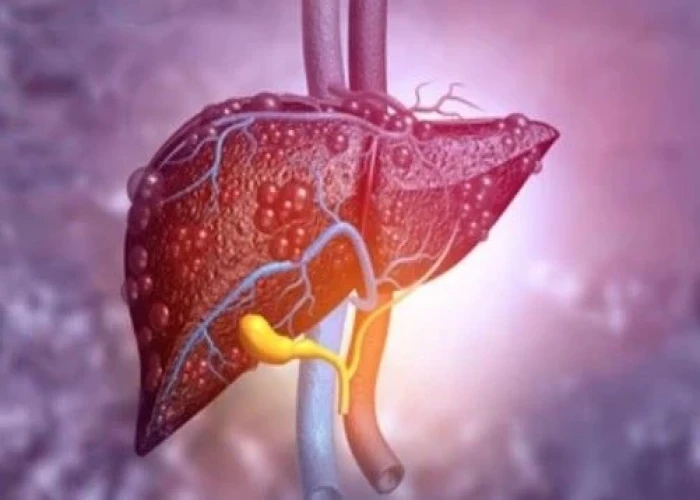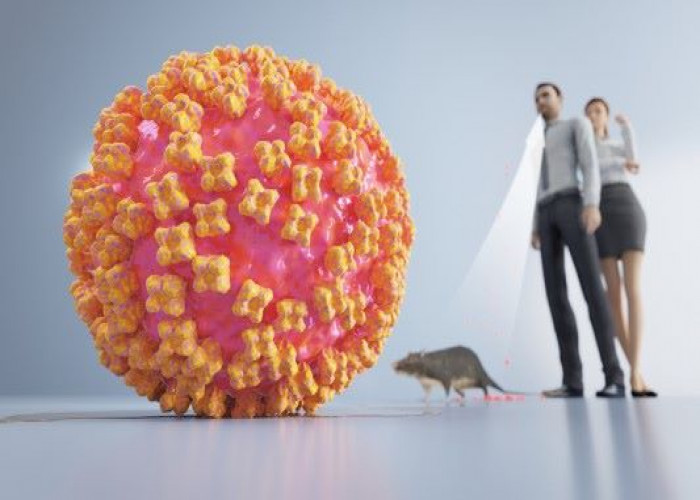 Welcome
Welcome
“May all be happy, may all be healed, may all be at peace and may no one ever suffer."
Hantavirus pulmonary syndrome

Hantavirus pulmonary syndrome (HPS) is a rare but serious respiratory illness caused by infection with hantaviruses, which are transmitted to humans through contact with the urine, feces, or saliva of infected rodents, particularly deer mice in North America.
The initial symptoms of HPS can include fever, muscle aches, fatigue, and gastrointestinal symptoms such as vomiting and diarrhea. As the disease progresses, respiratory symptoms such as cough, shortness of breath, and low blood oxygen levels can develop, and the illness can progress rapidly to respiratory failure and death in some cases.
There is no specific cure or treatment for HPS, and patients are often hospitalized and treated with supportive care such as oxygen therapy and mechanical ventilation to manage respiratory symptoms. Antiviral medications may also be used in some cases.
The best way to prevent HPS is to avoid contact with rodents and their urine, feces, and saliva. This can be done by sealing up any holes or gaps in buildings where rodents might enter, storing food in rodent-proof containers, and cleaning up any rodent infestations promptly and carefully, using gloves and masks to avoid exposure to potentially infectious materials.
If you develop symptoms of HPS, particularly if you have been in contact with rodents or their droppings, it is important to seek medical attention promptly, as early treatment can improve outcomes.
Research Papers
Disease Signs and Symptoms
- Fever
- Low blood pressure (hypotension)
- Difficulty breathing (dyspnea)
- Cough
- Diarrhea
- Burning stomach pain
- Nausea or vomiting
- Headaches
- Muscle pain
- Fever and chills
- Irregular heartbeats (arrhythmia)
Disease Causes
Hantavirus pulmonary syndrome
Rodent carriers
Hantavirus pulmonary syndrome is a human disease found only in North and South America. Each strain of the hantavirus has a preferred rodent carrier.
The deer mouse is the most common carrier of the virus in North America and Central America. In the United States, most of the infections occur in the states west of the Mississippi River.
Other carriers in North America include the rice rat and cotton rat in the Southeast and the white-footed mouse in the Northeast. Rodent carriers in South America include the rice rat and the vesper mouse.
Transmission
The virus is present in the rodent's urine, feces or saliva. You can come in contact with the virus in the following ways:
- Inhaling viruses — the most likely form of transmission — when they become airborne from disturbed rodent droppings or nesting materials
- Eating food contaminated with mouse saliva, urine or droppings
- Touching things contaminated with the virus, such as a nest, and then touching your mouth, eyes or nose
- Being bitten or scratched by an infected rodent
Person-to-person transmission of the virus has only been recorded with a strain of the virus found in South America called the Andes virus.
Effect of the virus
When hantaviruses reach the lungs, they invade tiny blood vessels called capillaries, eventually causing them to leak. Your lungs fill with fluid (pulmonary edema), resulting in severe dysfunction of the lungs and heart.
Related disease
Another disease caused by different strains of the hantavirus is called hemorrhagic fever with renal syndrome, which causes severe kidney disease. These variants of the virus have other animal carriers in Africa, Asia and Europe.
Disease Prevents
Hantavirus pulmonary syndrome
Keeping rodents out of your home and workplace can help reduce your risk of hantavirus infection. Try these tips:
- Block access. Mice can squeeze through holes as small as 1/4 inch (6 millimeters) wide. Seal holes with wire screening, steel wool, metal flashing or cement.
- Close the food buffet. Wash dishes promptly, clean counters and floors, and store your food — including pet food — in rodent-proof containers. Use tightfitting lids on garbage cans.
- Reduce nesting material. Clear brush, grass and junk away from a building's foundation.
- Set traps. Spring-loaded traps should be set along baseboards. Exercise caution while using poison-bait traps, as the poison also can harm people and pets.
- Move rodent-friendly yard items. Move woodpiles or compost bins away from the house.
- Air out unused spaces. Open up and air out cabins, campers or infrequently used buildings before cleaning.
Safe cleanup procedures
Safe cleaning will help prevent the spread of viruses. Follow these steps:
- Wear a mask and rubber or plastic gloves.
- Spray the nest, droppings or dead rodent with a household disinfectant, alcohol or bleach and water solution. Let it sit for five minutes.
- Use paper towels to clean up and dispose of towels in garbage.
- Mop or sponge the area with a disinfectant.
- Wash gloved hands and dispose of gloves and mask.
- Wash your hands thoroughly with soap and water.
Disease Treatments
Specific treatment options for hantavirus pulmonary syndrome are limited. But the prognosis improves with early recognition, immediate hospitalization and adequate support for breathing.
Supportive therapy
People with severe cases need immediate treatment in an intensive care unit. Intubation and mechanical ventilation may be needed to support breathing and to help manage fluid in the lungs. Intubation involves placing a breathing tube through your nose or mouth into the windpipe (trachea) to help keep your airways open and functioning.
Blood oxygenation
Severe disease may require a treatment called extracorporeal membrane oxygenation (ECMO) to help ensure you retain a sufficient supply of oxygen. This involves continuously pumping your blood through a machine that removes carbon dioxide and adds oxygen. The oxygenated blood is then returned to your body.
Disease Diagnoses
Disease Allopathic Generics
Disease Ayurvedic Generics
Disease Homeopathic Generics
-
Ceanothus
Q, 1X, Shakti 3/4 drops dose 3/4 times a day.
-
Agaricus muscarius
30, 200 strength 4 times a day.
-
Agnus castus
30, 200 strength.
-
Arsenicum
3, 30, 200 Shakti 4 times a day.
-
Lycopodium clavatum
1X, 3X in one dose 3/4 times a day.
-
Ferrum iodatum
3X
-
Carrica Papaya
Q
-
Calcarea carbonica
1X, 3X
-
Arnica montana
3, 6, 30 power
Disease yoga
Hantavirus pulmonary syndrome and Learn More about Diseases

Poison ivy rash

Chronic kidney disease

Focal segmental glomerulosclerosis (FSGS)

Ulnar wrist pain

Panic attacks and panic disorder

Moyamoya disease

Primary sclerosing cholangitis

Cyclospora infection
hantavirus pulmonary syndrome, হান্টাভাইরাস পালমোনারি সিন্ড্রোম
To be happy, beautiful, healthy, wealthy, hale and long-lived stay with DM3S.
